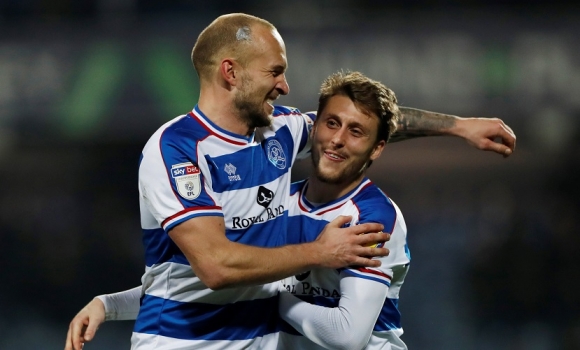Accounting for success — Column Friday, 28th Feb 2020 14:20 by Simon Dorset With the club’s latest set of accounts mixing an improved picture with still stark realities of the club’s situation, our resident grown up Simon Dorset assesses where we are with FFP. We’ve all become so accustomed to the pace of change at QPR that is barely registers anymore. In just the last 12 seasons the club has employed 13 full-time managers liberally interspersed with a sprinkling of seven interim or caretaker appointments. The average tenure of those full-time managers has been just over 300 days each — removing Messrs Warnock, Redknapp and Holloway from the equation halves that statistic — which cuts a stark contrast to the previous 102 years when, according to Wikipedia, the club’s 34 managers averaged over 1,000 days each. QPR changed division four times during those 12 seasons and such has been the phenomenal throughput of players, that only four of them, Nedum Onuoha, Clint Hill, Ale Faurlin and Massimo Luongo, have started in 140 or more league matches. However, the most startling change over that period has been the football world’s attitude in general towards money. The reason I’ve used this particular frame of reference is because it is just 12 years ago that QPR finally repaid their £10m loan from the ABC Corporation. Under the threat of expulsion from the Football League if the club attempted to start the new season while still in administration, QPR took out the exorbitant loan from the Panama registered company in May 2002 secured against their only significant asset - Loftus Road. While servicing the monthly interest payment of £83,333 stretched QPR’s resources to the limit, the prospect of having to repay the principle sum of the loan by July 31 2008 threatened to drag the club under. When Flavio Briatore, QPR Holdings Ltd.’s chairman, announced that the loan had been settled, albeit by taking out another, cheaper loan, a great weight was lifted from the club. The fact that the new loan was from a company, Amulya Property Ltd, which was connected to Briatore and Amit Bhatia made it seem far less daunting.
Considering that QPR’s 2017/18 accounts reported a loss in the region of £37m, that loan of £10 million now seems relatively modest but, of course, the financial landscape has changed dramatically in the intervening years. Television rights have more than quadrupled and fantastically wealthy foreign businessmen have adopted the Premier League as their playground; both of these have had a detrimental effect on football in this country as a whole. The competitive edge that once stood the Premier League apart from La Liga, the Bundesliga, Serie A or Ligue 1 is slowly being eroded, while the owners of Championship clubs are making highly dubious short term decisions and jeopardising their clubs’ futures in desperate attempts to jump on board the gravy train. For a few seasons QPR were unrivalled in the madness stakes. The club haemorrhaged money at an incredible rate in a frenzied attempt to maintain their presence in the world’s most lucrative league Their accounts have shown the battle scars of that wretched failure ever since, but slowly and surely the club has been getting its house in order and with today’s publication of the 2018/19 accounts we finally get a chance to see how successful Lee Hoos has been in positioning the club to start life without parachute payments. 2018/19The first figure that jumps off the page is the loss for the year and that at £10.3m it is considerably down on the previous year. As the previous year included the FFP fine and costs that was a given but after allowing for those exceptional items the loss is still around £12m less. There are four factors which have resulted in this: revenue is up, player sales are up, wages are down, player amortisation is down. To briefly look to these in turn Revenue: remarkably this is not just up as a whole, all but one of our individual revenue stream has been increased. Gate receipts, broadcasting rights, sponsorship, commercial income and other income have all increased, only sales of inventories have slipped. Overall up £3m. Costs: In most businesses payroll is the largest cost, and football clubs are certainly no exception and it is here that the club have made the greatest saving. According to the football finance guru Keiron Maguire, QPR are now third best in the wages to revenue ratio at 69%. Does anyone still miss Jack Robinson? Player amortisation is also down. For those unfamiliar with this term, it is to do with the treatment of the cost of buying players. When a player is bought the whole of his cost isn’t immediately debited to the club’s profit and loss. Instead he becomes an intangible asset on the balance sheet and his cost is debited to the profit and loss account equally over the length of his contract. So if a player was bought for £4m and his contract was for four years, he would be shown as costing the club £1m per season. This is called amortisation. Costs overall down £7m. Player Sales: Virtually unheard of in recent years when we’ve had to pay-off players to get them off the premises. In this era of undisclosed transfer fees in it hard to pin down, but the accounts show a profit, presumably for Smithies and Sylla. It should be born in mind that the profit is the difference between the transfer fee and the residual value of their original cost — the unamortised part. Overall up £2.5m. FFPWhile I’m sure that we are all pleased to see the right trends in the accounts, the burning question is where does this leave us with regard to FFP. Slotting these figures into the table from my Tough Battle Ahead in Ongoing War with FFP article from the beginning of the season, the answer is very encouraging. As a reminder, I’ve adopted the £4m per season estimated by the excellent Swiss Ramble (who provides detailed analysis of QPR’s accounts every year as they are released via Twitter). Secondly, the 2017/18 loss has been adjusted to remove the cost of the FFP fine levied against the club and the payment of the initial instalment of it along with the payment of the EFL’s costs. I’ve not adjusted the 2018/19 figure to remove the latest instalment of the fine as I think there has been some wizardry in the accounts and need to understand that before doing so. There is a difference between cash flow and profit and loss; just because £1.7 million went out the door, it doesn’t mean that is how it will show in the accounts. The loss for 2018/19 will be less than shown.
* QPR were in the Premier League in the 2014/15 season. The Championship’s FFP regulations allows for a contribution of £35 million per season spent in the Premier League to the club’s rolling 3-year permissible loss as opposed to the £13 million per season in the Championship. The obvious question is with headroom of £11m was it necessary to sell Luke Freeman last summer? My answer would be yes. There are two factors which need to be considered. Firstly this season we do not have a parachute payment. Our broadcasting rights revenue will drop by £12m, that being the difference between out last parachute and the solidarity payment which will replace it. Secondly we have the smallest loss we’ve made since FFP’s inception rolling out our reporting period. Projecting forward onto this season, in simplistic terms, if we assume that the headroom will be eaten up by the loss in broadcasting rights revenue, then we need to reduce or loss to replicate that £6.5m. Without any doubt, this is the toughest season we will face in regard of FFP, but on the plus side, we do have the profit from the sales of Luke Freeman, Darnell Furlong and Massimo Luongo safely in our back pocket. Having watched and admired the way that Lee Hoos has successfully set and adhered to budgets to keep us within our FFP limits over the last few seasons, I have no doubts that he will steer us through this final transition. As hard as it is to countenance, especially taking that massive loss into account, QPR has emerged from the financial madness at a time when other clubs are looking like imploding. For the first time since long before the heady days I referred to in my opening paragraphs, QPR now controls the money, not vice versa and while it may be a fragile existence, I doubt there are many teams in our division who wouldn’t swap positions with us without hesitation.
Football is, of course, about more than just achieving financial goals. At the same time as Hoos has maintained a tight grip on the expenses, Les Ferdinand has presided over a complete rejuvenation of our academy and development squads to the point where we now have a number of highly sought after young players featuring prominently in our first team and the promise of more to follow in their footsteps. The pair of them, along with their many deputies will have performed a minor miracle if we escape from this season without breaching FFP and with a stronger team than we entered it. Take another look at that table, particularly the loss that will be rolling out of our reporting period once we are through this season. £22.5m! That will be the loss we can afford to make next season if we get through this season losing no more than £6m. If we achieve that there is no way on God’s earth that we HAVE to sell Ebere Eze or anyone else. That doesn’t mean we won’t, but it should be at the right price for QPR. Pictures — Action Images Action Images Please report offensive, libellous or inappropriate posts by using the links provided.
You need to login in order to post your comments |
Blogs 31 bloggersQueens Park Rangers Polls[ Vote here ] |
We in turn value your personal details in accordance with our Privacy Policy.






